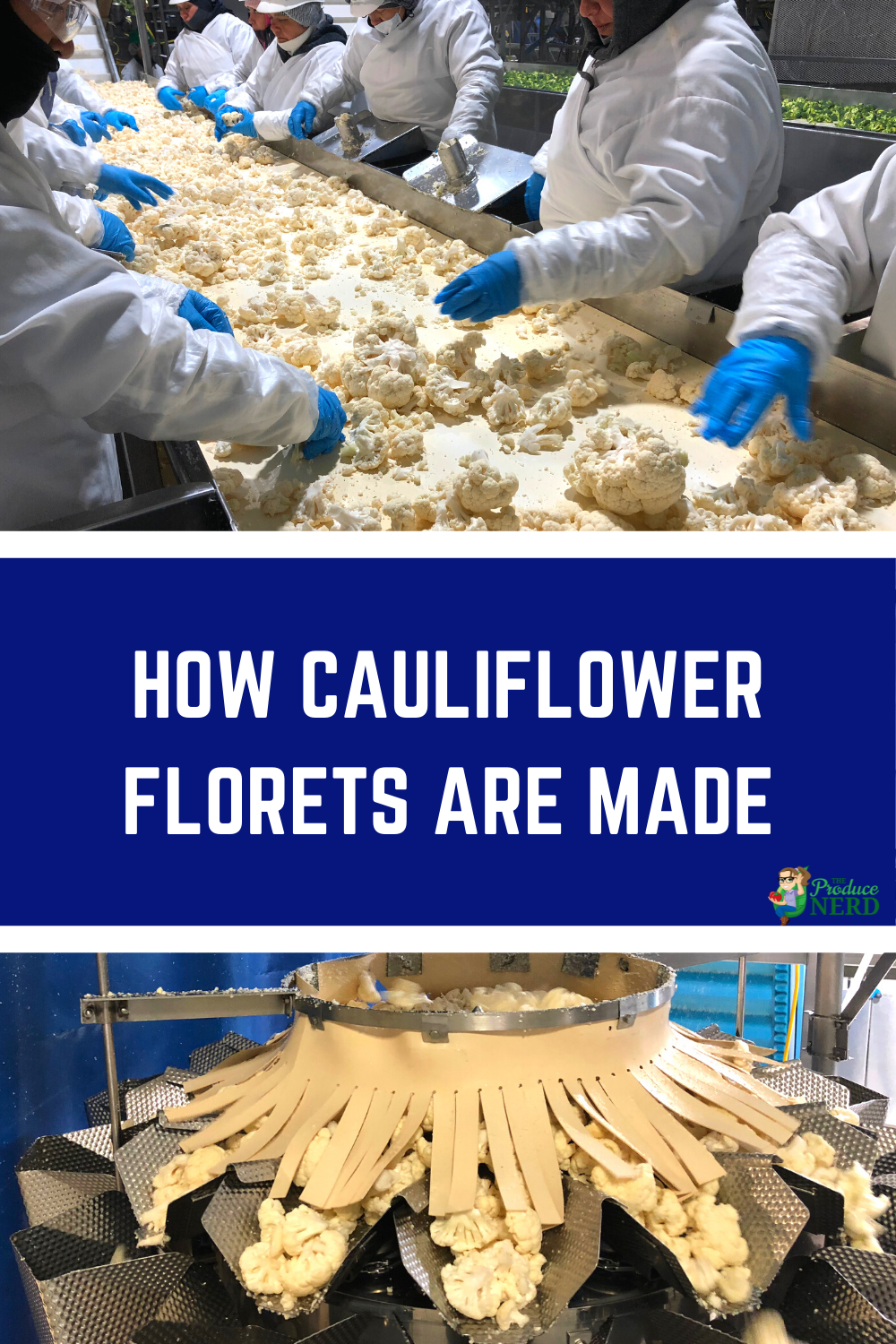You can either buy a head of cauliflower at the store or ready-to-eat cauliflower florets. When the cauliflower is broken down into florets, it is one less step in the process of creating your next dish. The time that you save in the kitchen by buying florets will cost you a little bit more money, but in today’s blog, you will see all of the extra steps involved that drive those costs. Below you can see a step-by-step overview of how cauliflower florets are created at Gold Coast Packing’s processing facility (Fresh Venture Foods) in Santa Maria, California. (This is the same facility where you saw Gold Coast Packing’s cabbage processing operation.)
Table of Contents
Cauliflower Processing
Cauliflower can either be harvested and packed in the field (as seen previously here), or it can be harvested and taken to the facility for further processing. In this case, the heads of cauliflower are processed into ready-to-eat cauliflower florets. The process of creating cauliflower florets is outlined below.
- De-coring Machine – The harvested cauliflower comes in from the field in RPCs (reusable plastic containers). The workers remove the heads of cauliflower from the containers and place them into the designated slots on the de-coring machine (floretting machine). The machine removes the cores from the heads of cauliflower and breaks them into cauliflower florets.
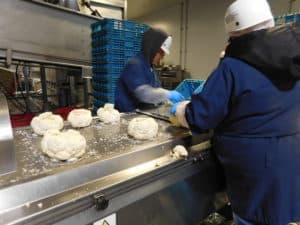
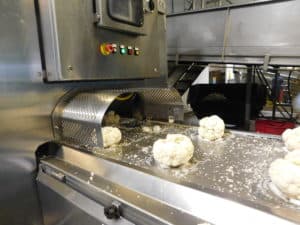
- Hand Sorting – The workers then review the cauliflower that passed through the de-coring machine to make sure that they were cored correctly. If they were not, they core the heads by hand, and make sure all of the cauliflower florets are separated. During this step, which is more for quality assurance purposes, the workers visually inspect the work done by the machine to make sure that the product that proceeds is cauliflower florets. The cauliflower florets are then washed in sanitized wash water and proceed to the dryer.
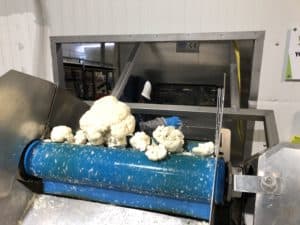
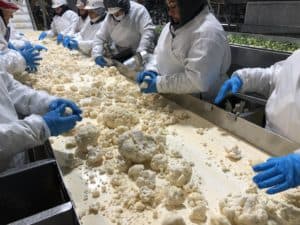
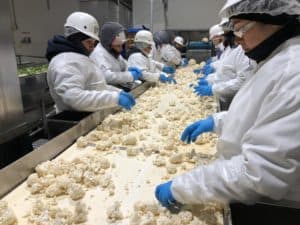
- Drying – The dryer dries the cauliflower florets and sends them up on another conveyor line to a multi head weighing machine.
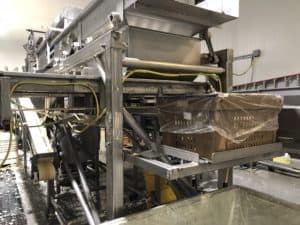
- Weighing Machine – The multi head weighing machine weighs out the correct amount of product to be packed into each retail pack. The allotted amount then drops down to the automated packing machine.
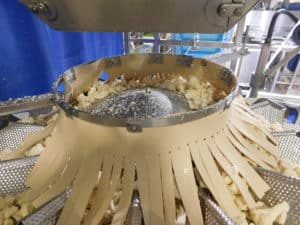
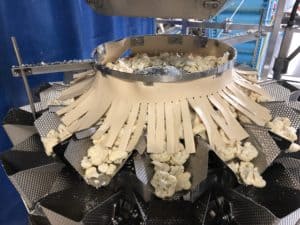
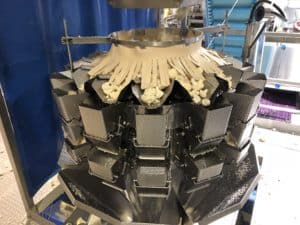
- Packing – The bags are packed using an automated machine, then pass through a metal detector and are packed into boxes, which are then palletized to prepare for shipment.
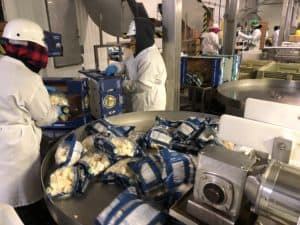
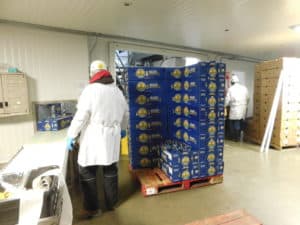
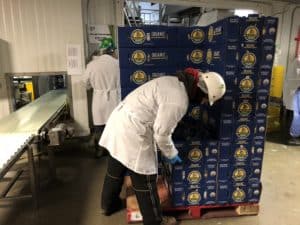
Cauliflower Processing Video
You can see a step-by-step overview of the process in the video below.
How to Cut Cauliflower Florets at Home
Below, you can see how cauliflower florets are created on a large scale, at a processing operation. However, if you were to buy a head of cauliflower and wish to create cauliflower florets at home, the process is fairly simple. Essentially, you just remove the core and cut the rest of the cauliflower head into smaller pieces. There is an easy tutorial on this that you can reference here.
Food Safety Considerations
For a cauliflower processing operation, some of the main food safety concerns are:
- Testing and changing of the wash water – The cabbage is exposed to recycled wash water (where it isn’t changed between the loads), so there needs to be a constant testing of the wash water and change out when required.
- Cleaning and sanitation of the processing equipment – The majority of this operation is performed by machinery, and there is a lot of machinery, so it is important that all of this be cleaned and sanitized frequently (e.g., between shifts, daily).
- Glove policy – Since gloves are required, there needs to be a glove policy enforced. This means that the gloves are controlled by the company, and that they are changed out appropriately.
There are many more items to be taken into consideration, but this is just a brief list to get you thinking about it!
Featured Grower Information
I would like to thank Gold Coast Packing and Fresh Venture Foods for the tour and for allowing the gathered content to be shared. Gold Coast Packing is a vegetable grower, based out of Santa Maria, California, with cabbage, broccoli and spinach among the products they grow, pack and process.
If you enjoyed this post, you might also like:

